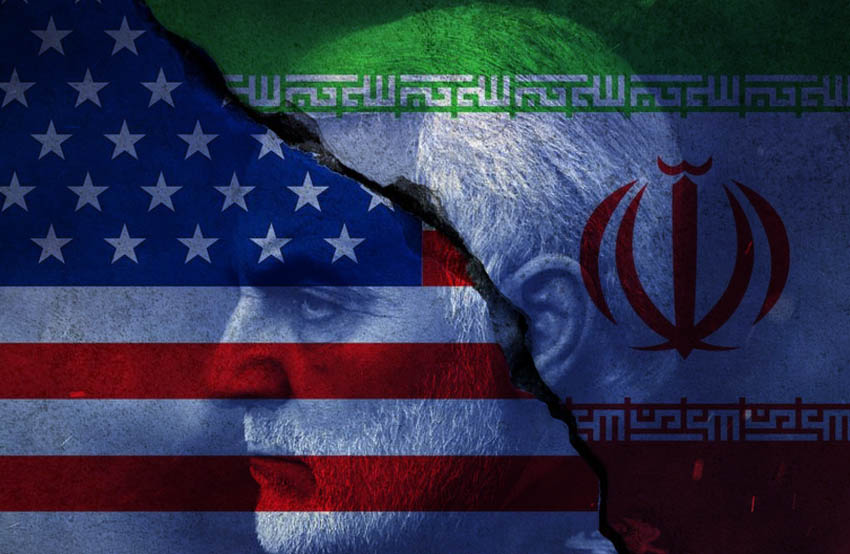Thu 09 January 2019:
The U.S. drone strike that targeted and killed top Iranian commander, Maj-Gen. Qassem Soleimani, generated an extraordinary amount of controversy in U.S. policy circles, even by the standards of Middle East issues. While some admire President Donald Trump’s boldness in targeting Soleimani, many others were quick to decry it as a mistake. Any judgment should assess the killing against its actual goals: to re-establish escalation dominance over Iran and, as stated by the Department of Defense, to deter Iranian actions that violate certain U.S. “red lines.” It is simply too soon to tell whether killing Soleimani has accomplished this or its opposite.
Fears of a major regional war are likely misplaced. But if Iran chooses to counter-escalate – to take even more aggressive action than the strike on Soleimani – the United States will come under great pressure to respond in kind or risk a serious strategic crisis. Washington need not respond dramatically to a more muted Iranian action, including the recent ballistic missile attack on Al Asad airbase, however.
The United States killed Soleimani to put an end to a dynamic in which Iran was responding to Washington’s broad “maximum pressure” campaign through attacks on U.S. bases, the downing of a U.S. drone, missile and drone strikes on a major oil facility of U.S. ally Saudi Arabia, and an attack on the U.S. Embassy in Baghdad. The U.S. reaction was limited initially, but it escalated to air strikes on Iranian proxy assets in Iraq following the death of a U.S. national. Killing Soleimani is a qualitatively different level of escalation, however.
Soleimani was valuable to Iran, if not quite indispensable. Despite his personal charisma and mastery in directing asymmetric and proxy warfare, Iran has deep institutional knowledge and expertise in these fields. Yet Soleimani continued to play a key operational role abroad and to command great prestige and symbolic importance due to his role in decades of advancing the Iranian position in Lebanon, Syria, and Iraq. Moreover, the regime had gone to great lengths to build a cult of personality around him.
Gauging Iran’s Response
Soleimani was too visible and storied a figure for Iran to remain passive about his killing. The recent missile attack on Al Asad airbase was its first response. Yet many observers and analysts appear to see any Iranian response at all as proof that deterrence has failed and escalation dominance has eluded the United States. This depends on what exactly Iran does, however, and how that affects Washington’s interests. While it is possible that the U.S. administration acted without giving much thought to the results, it more likely judged that the probable Iranian response will be acceptable. More specifically, it calculated that Iran would retaliate, but as long as the retaliation was less aggressive than killing Soleimani, then it was a backlash the United States could absorb.
To understand this calculation, it is necessary to examine Iran’s geopolitical position and options. Since the United States overthrew Saddam Hussein in 2003, Iran has greatly improved its strategic position in the Middle East. It dominates Lebanon, Syria, Iraq and has extensive influence in Yemen.. Soleimani’s death has not eliminated these hard-won gains. Therefore, Iran’s core interests are intact.
Tehran is not compelled to take any action that might risk a large-scale conflict with the United States. It has no real reason to fight a war it cannot win. Iran could live with a status quo in which it keeps its regional sphere of influence in exchange for desisting from killing American civilians or attacking U.S. embassies. It can confine itself to actions less provocative than Soleimani’s killing.
Iran has options for retaliation. They included limited attacks on U.S. personnel and assets in Iraq, escalation against Saudi Arabia through asymmetric or ballistic missile attacks, or pushing Hezbollah to launch a targeted attack on Israel. These are all unwelcome, to be sure, but they are also things Iran has already tried only to end up losing a prized asset to a U.S. drone strike. If the Iranian response falls within this general spectrum, then killing Soleimani may well have accomplished its goals.
There is the matter of the U.S. military presence in Iraq. Soleimani’s killing appears to have laid the foundations for an eventual U.S. exit from Iraq under Iranian pressure. This could end the anti-ISIS deployment and training programs for the Iraqi security forces. However, this may take many months to play out and may not happen at all. This is indeed significant, and if the U.S. administration did not account for this possibility, it would be a bizarre oversight.
Having said that, it would not necessarily be a catastrophe. Iraq has been solidly in the Iranian sphere for a while now, and Iraqi efforts to undo that have been organic and domestic. ISIS remains a problem but it is still unclear when (if ever) the United States would withdraw its remaining forces, under what conditions, and what the U.S. military presence in Kurdish areas would look like. In addition, the anti-ISIS deployment has become a constraint on U.S. forces’ freedom of movement, because it has always required some level of Iranian approval and exposed U.S. interests to an Iranian attack.
Considerations for the Future
None of this is to say that killing Soleimani was good or bad policy. This would depend on one’s views on U.S. priorities (and one’s partisan affiliation, unfortunately). For example, nuclear talks are likely dead, for now at least, and anyone prioritizing non-proliferation will see that as a failure. Likewise, those who have supported a broader U.S. detente with Iran cannot support the killing one of its top strategic minds.
These are valid positions, but to say that Soleimani’s killing is a reckless move that has already failed is premature. In addition, there are those who believe the United States and Iran are simply adversaries in a zero-sum competition and that deterrence and escalation-dominance are valuable in themselves (and by no means are all of these people Trump champions). There is at least some truth to this, and it is too early to say whether Soleimani’s killing advances Washington’s position in that regard.
Of course, Iran might counter-escalate anyway, despite its favorable regional position and limited options. Any effort at escalation dominance carries the risk that the other party will misjudge what it can get away with or will simply refuse to back down. An Iranian response that kills senior U.S. personnel or American civilians would present a problem for a president reluctant to get drawn into Middle East conflicts.
In that case, failing to respond with even more aggressive action would greatly damage U.S. credibility. It would be the opposite of what Soleimani’s death was meant to achieve. Yet the United States can afford to absorb an Iranian response that is considerably less aggressive than the highly provocative step of killing Soleimani. Planning for these two very different scenarios should not wait until Iran retaliates in a more than a symbolic way.
Faysal Itani is the deputy director of the Non-state Actors in Fragile Environments (NSAFE) program at the Center for Global Policy. Itani is also an adjunct professor of Middle East politics at George Washington University. Follow him at @faysalitani.
The statements, views and opinions expressed in this column are solely those of the author and do not necessarily represent those of Independent Press.
Think your friends would be interested? Share this story!





